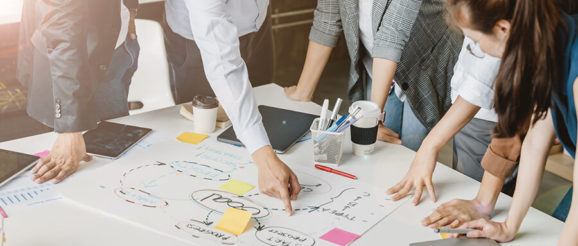Neuroplasticity, Unconscious Bias and Innovation


Innovation needs fertile ground to prosper, but organizations sometimes have difficulty figuring out the characteristics of the environment that fosters innovation. Here’s a hint: It’s not bean bag chairs and ping pong tables in the break room. Instead try fostering innovation through inherent openness, willingness to listen, and recognition of all ideas, large or small.
A Lack of Ideas Doesn’t Mean There’s an Innovation Problem
According to David Burkus (“Innovation Isn’t an Idea ProblemThe Harvard Business Review) the problem isn’t a lack of ideas, it’s the failure to recognize the value in ideas. Burkus posits that all people have a bias against new and creative ideas that contain even a small amount of uncertainty.
He recommends a system based on the assumption that everyone in the company already has great ideas. In this case, the solution is not to solicit more ideas, it’s to find ways to recognize good ideas from the thousands of ideas made available.
Unconscious Bias Can Hurt Innovation Efforts
Every human characteristic is grounds for someone else’s unconscious bias. Who hasn’t been in a meeting where someone puts forth an innovative idea that is either ignored or quickly put down? A few minutes later, another person floats a similar idea, or even an iteration of the same idea, to a rousing chorus of oohs, aahs and attaboys.
Sometimes people ignore the first idea out of unconscious negative bias toward the person whose idea it was, but it’s also possible that the second idea received quick acceptance because of an unconscious positive bias. The trick to working around unconscious bias is to recognize its existence and then find ways to overcome them. One of the best ways is to enhance neuroplasticity.
What is Neuroplasticity?
Neuroplasticity is the brain’s ability to form new synaptic connections or reorganize existing connections. This neuroplastic growth and rewiring of our brain cells remodels the way our mind works based on our new experiences. While we often think of improving neuroplasticity as a response to illness or injury, neuroplasticity should be a goal for everyone throughout their entire life.
Identifying and Accepting Innovation Opportunities
Until recently, the assumption was that brain architecture and the number of neurons were fixed, but recent research shows that even after severe injury the human brain can generate new thought pathways.
According to researcher and educator Judy Willis, learning physically changes the brain and students learn more when they understand that their intelligence is malleable. While not all of her classroom practices are practical in the business world, reinforcing concepts and providing information in context can improve the presentation and acceptance of innovative ideas.
Putting information in context is a key idea for helping people learn. In the classroom, this might relate to creating curricula that builds on prior concepts. In the business world, it might mean asking the person who has a new idea to relate it to existing concepts.
Think of it this way. When Kodak invented the digital camera in 1975, they were so focused on film innovations that they couldn’t even see that the digital camera made film irrelevant to the consumer. If instead of saying the idea had no value, they had worked with the inventors to understand a world in which digital photography is mainstream, Kodak might still be around. The decision-makers at Kodak lacked neuroplasticity and they had no context for the new idea. This is a good example of disruptive innovation, and the universe is full of similar stories.
Fostering Innovation in Business
Creating an environment where innovation can truly thrive requires a culture of listening. When someone puts forth an idea whose value isn’t immediately obvious, don’t ignore it. Ask the person to explain what they mean and how they see the world or the customer evolving to a place where the idea has value. Do this for every idea—not just ideas that come from recognized innovators.
Young people, old people, people of varying ethnicities, genders and a host of other variables are victims of either conscious or unconscious bias every day, but they also come up with great ideas every day. Create an environment of listening and stretch the neuroplasticity of your brain so you can accept innovative ideas more easily.
The post Neuroplasticity, Unconscious Bias and Innovation appeared first on QAD Blog.
